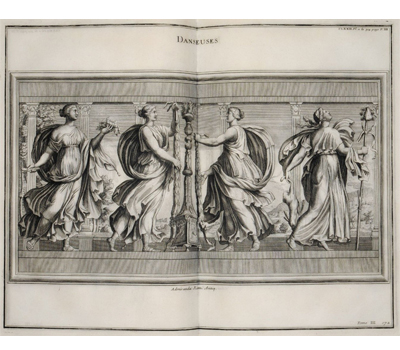Antiquitatum Thesaurus: Antiquities in European Visual Sources from the Seventeenth and Eighteenth Centuries
Links to the project
The project investigates drawings and prints of the seventeenth and eighteenth century based on artefacts from antiquity, and links them with the ancient objects that they document as well as with other evidence of their reception in a digital repository.
The aim of the research is to make extensive visual material available to scholars of various disciplines – first and foremost of the archaeologies of Europe and the Mediterranean, of art history and history, of ancient and early modern philology, as well as of the history of knowledge and of the Humanities. It includes nearly 7,200 drawings and other unique graphic works as well as roughly 15,000 printed reproductions, which along with the ancient objects, whether preserved or lost, that are documented in them will be processed to create approximately 35,000 datasets. With its focus on the seventeenth and eighteenth centuries, the project closes a gap that is currently found in the foundational research on the reception of ancient works of art and architecture in the early modern period. Not only did the amount of visual material explode during this period; what also emerged were processes of pluralisation and historicisation, which, particularly due to their different reference to the ancient past, are of central importance from the perspective of both politics and society and the history of scholarship.
 Antiquitatum Thesaurus
Antiquitatum ThesaurusAntiquitatum Thesaurus: Antiquities in European Visual Sources from the Seventeenth and Eighteenth Centuries
Host Academy
Berlin-Brandenburg Academy of Sciences and Humanities
Location and federal state
Berlin, Berlin
Type
Editions: Art History and Archeology
Project number
II.E.18
All the drawings and printed reproductions will be compiled as such and catalogued systematically based on the ancient artefacts depicted in them. The information about ancient monuments and their documentation in images and texts in the early modern period is fed into an – internally and externally – highly integrated online database. With its pivotal broadening of the material basis for research on ancient artefacts in the early modern period, the project contributes to differentiating the concepts of antiquity, arts, and aesthetics in the modern period, and thus opens up new research perspectives. It sheds light in particular on the transformation of knowledge of antiquity in the modern era and provides a new basis for a decisive, shared formative stage for the later disciplines of archaeology and art history.
Back to overview
